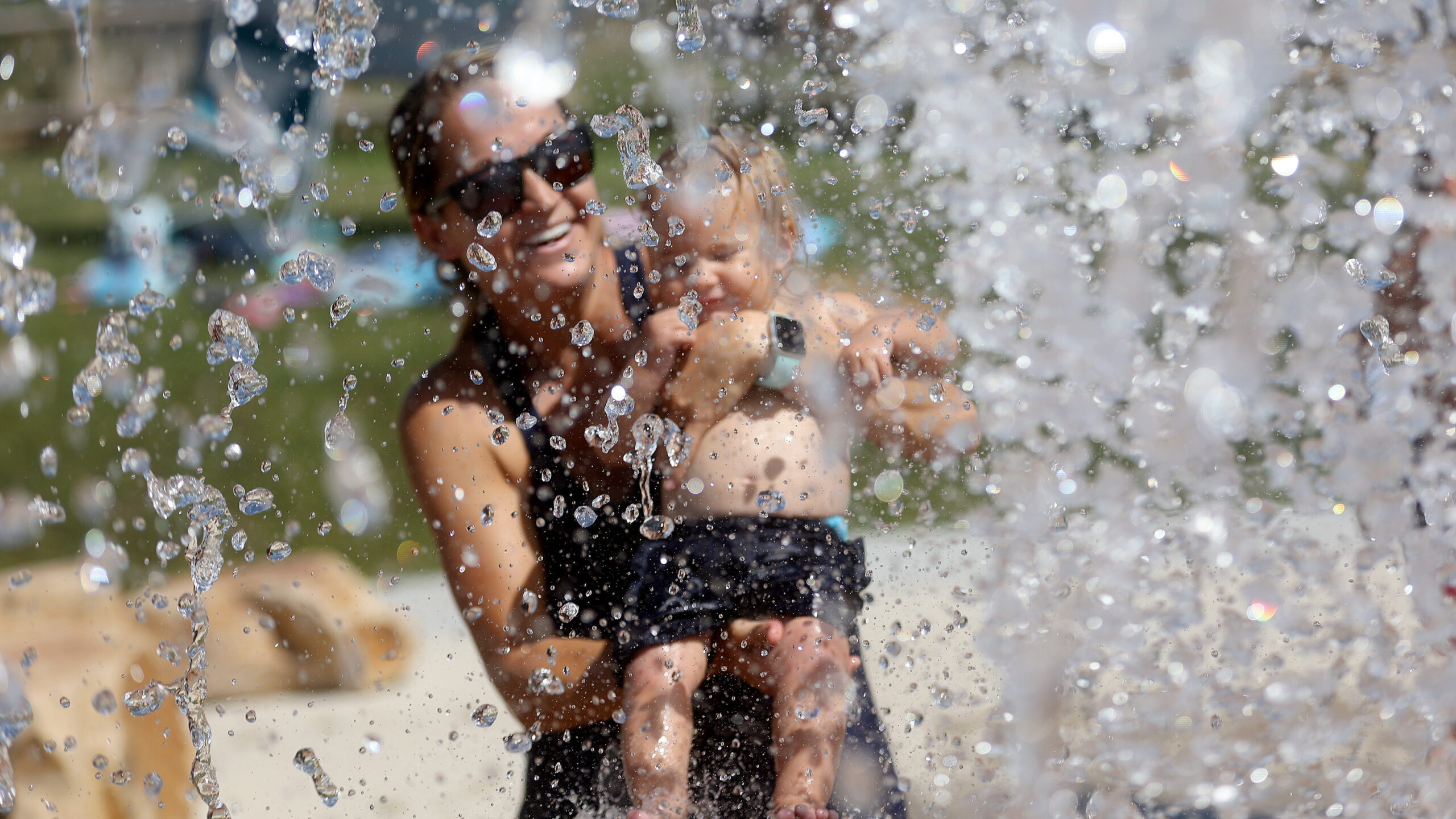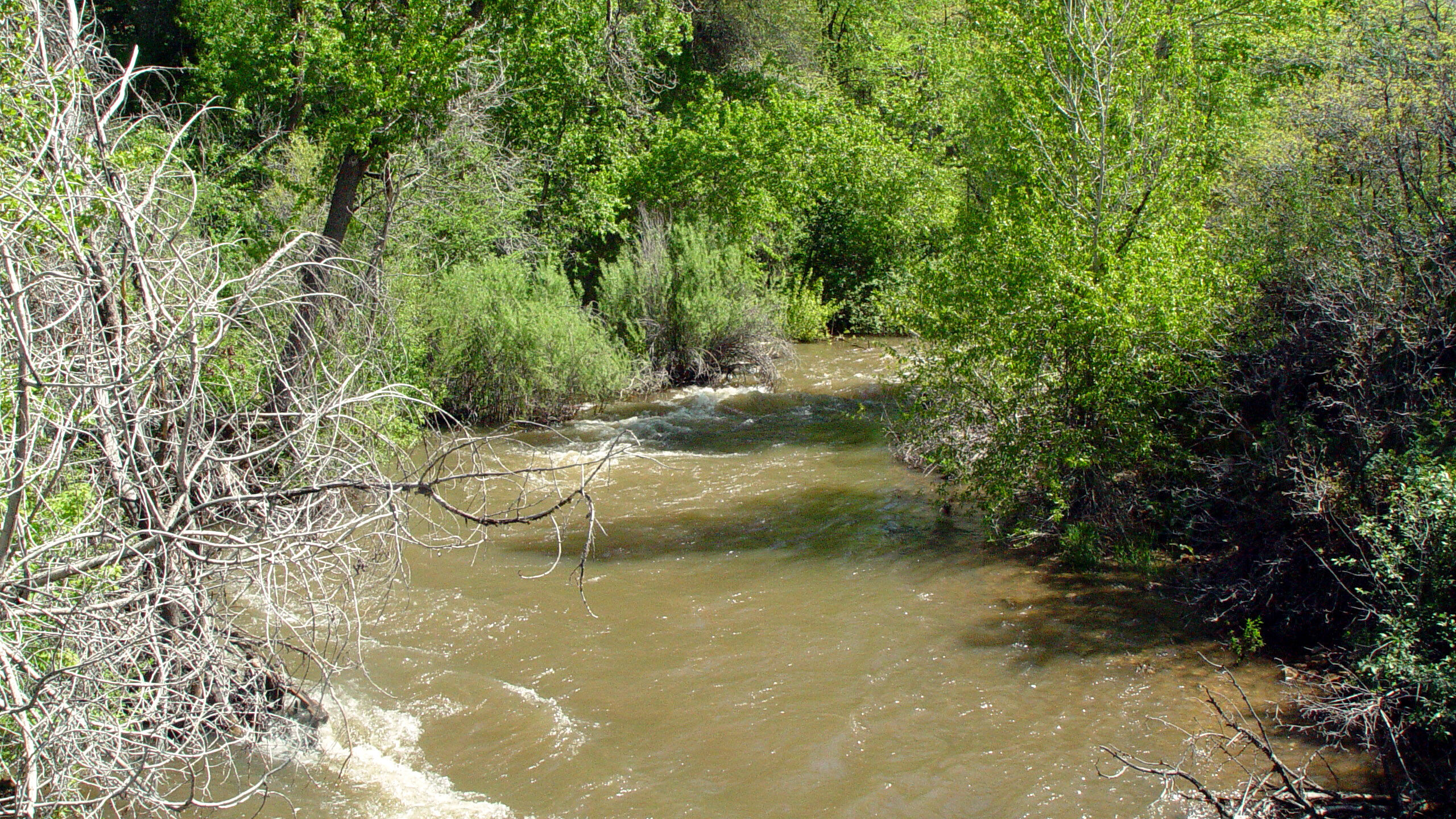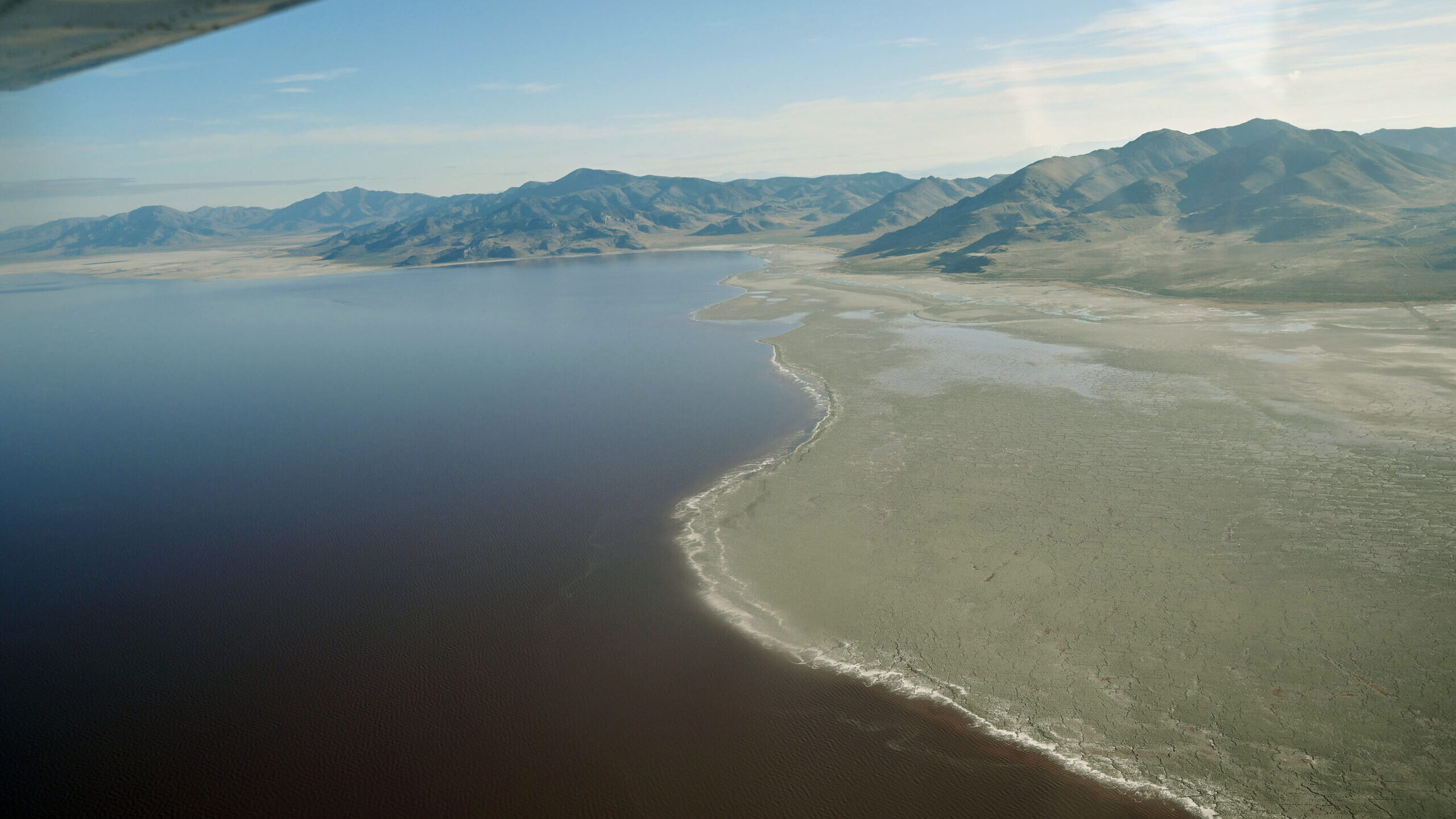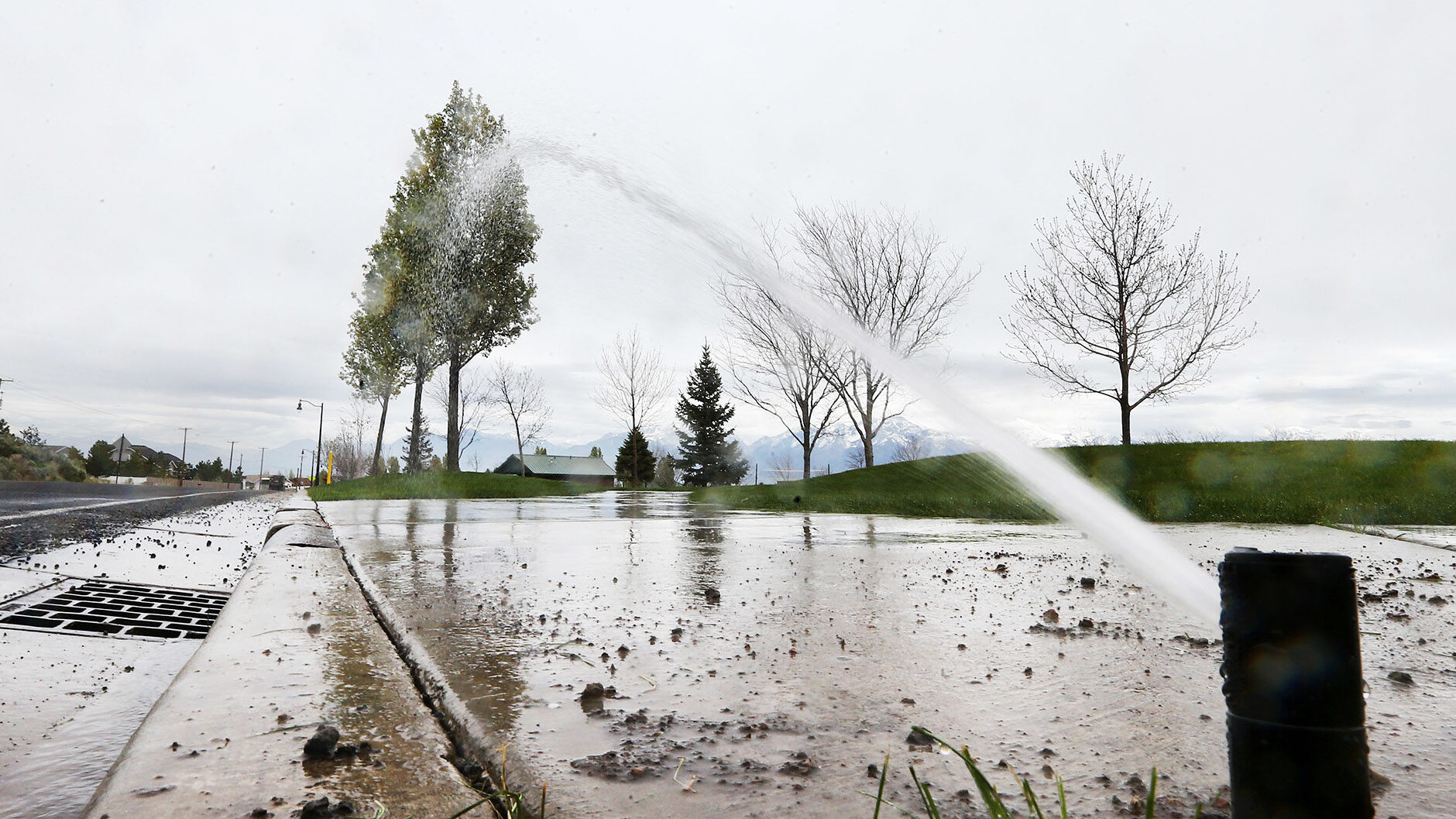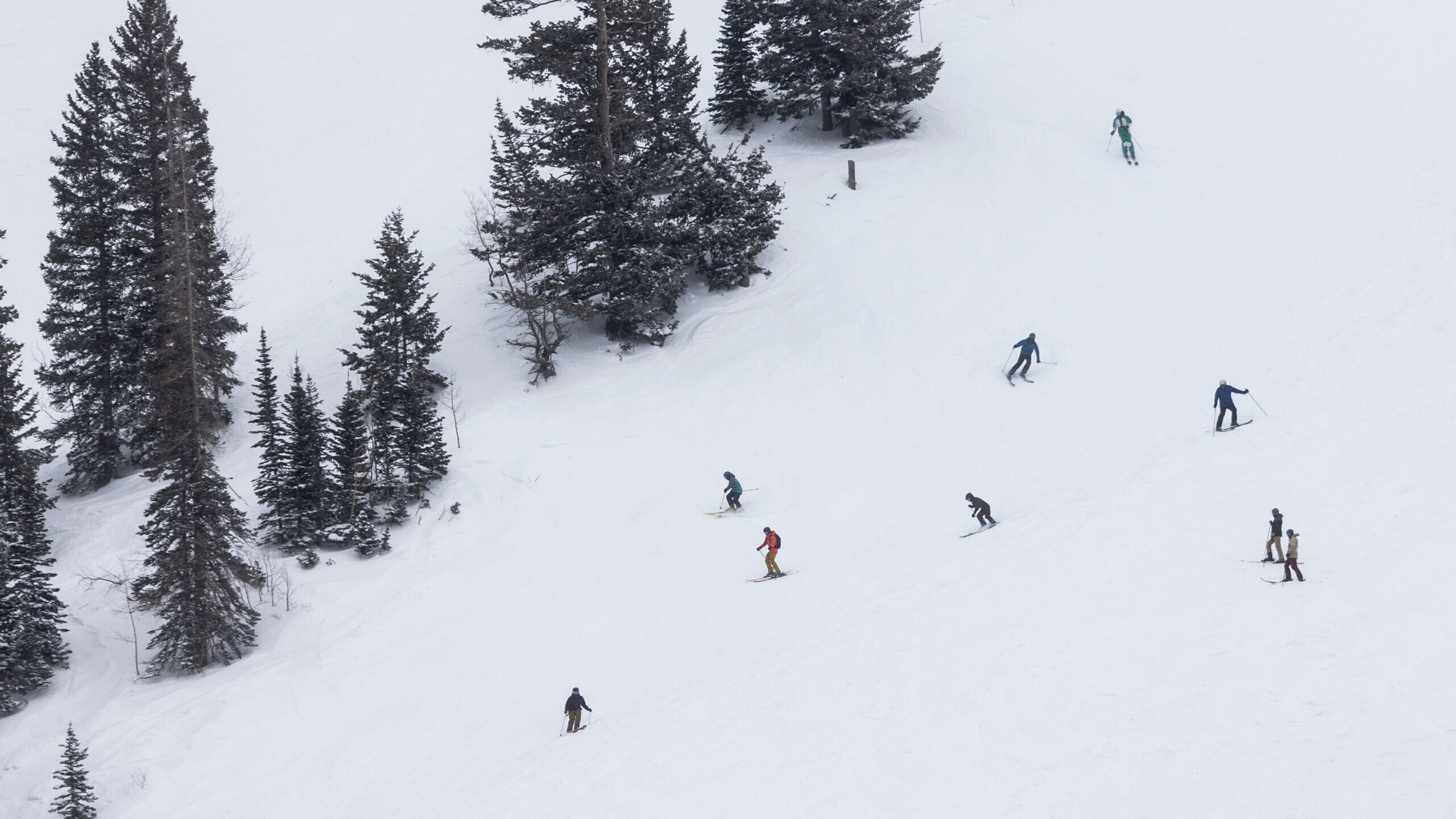Wet weather means wait to water says USU expert
May 4, 2022, 4:35 PM | Updated: 5:10 pm
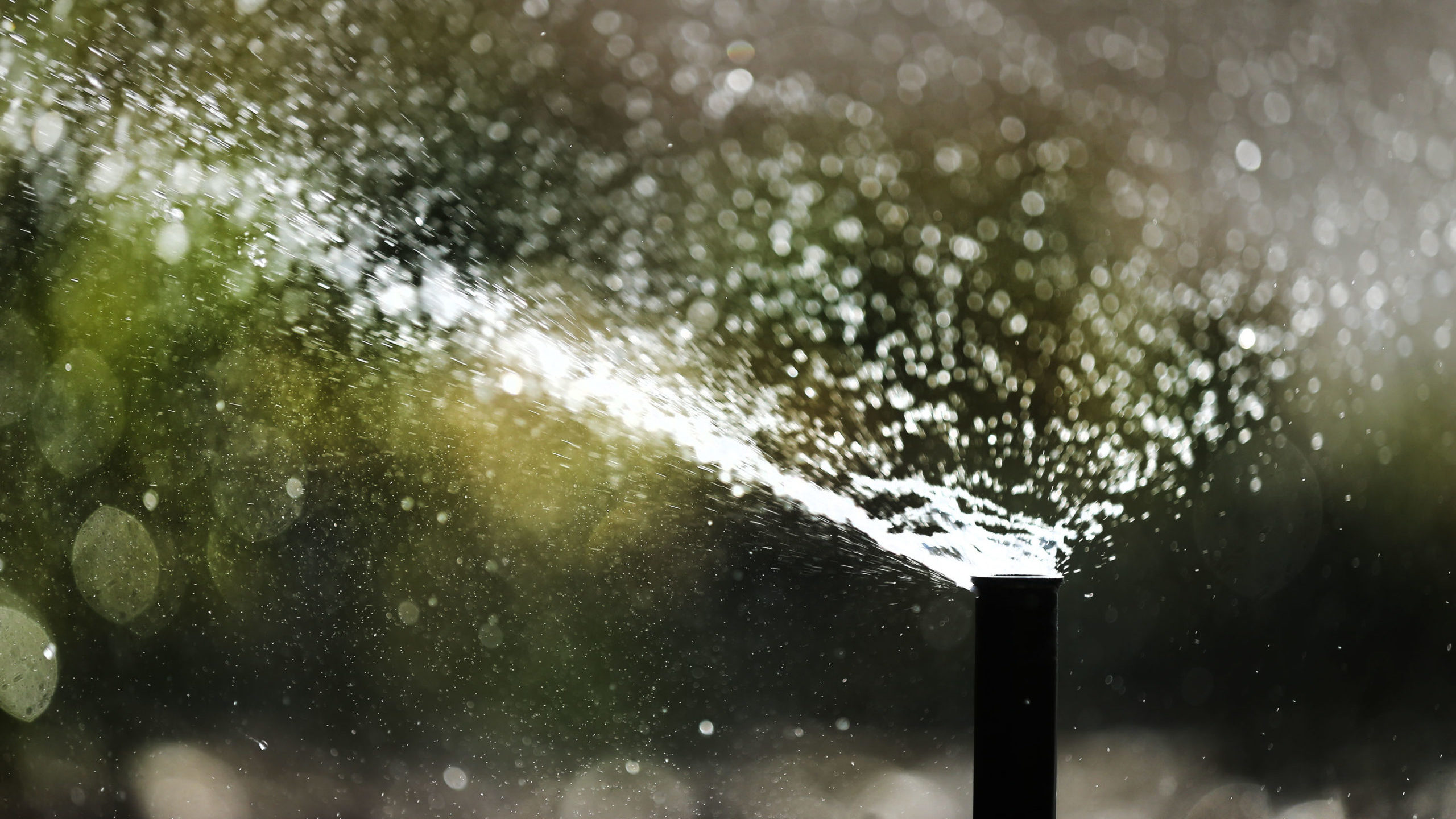
Grass is watered at Salt Lake Community College in Taylorsville on Thursday, July 1, 2021. (Laura Seitz/Deseret News)
(Laura Seitz/Deseret News)
SALT LAKE CITY — The wet weather northern Utah has received during April and May so far has allowed lawns to turn green without irrigation, and a turfgrass expert from Utah State University says there’s no reason why Utahns can’t wait to water.
There’s enough moisture in the soil right now to keep our lawns going until secondary irrigation water is available, Professor Kelly Kopp said. The Weber Basin Water Conservancy District, the largest supplier of secondary irrigation water on the Wasatch Front, is in effect forcing users to wait to water. Their delivery will be delayed until mid-May. Normally, it begins in April.
Once that water is available, Kopp said there are ways to use it more efficiently. Those include letting the grass grow longer.
“There’s a direct relationship between the length of the grass leaves and the depth of the roots, so you can imagine that if you’re mowing your grass at three to four inches, you’re going to have roots at least that deep if not deeper,” she told KSL NewsRadio.
When irrigation water is available only once a week, Kopp said there’s a technique called “cycle and soak” that gets water right where it needs to be — at the grass roots.
“You would perhaps irrigate for five minutes and then wait an hour, five minutes and then wait an hour, and then the last five minutes for a total of fifteen,” she explained.
If all of that is not enough, Kopp said grass is tough. It can survive even drastic limits on watering.
“We did some experiments last summer to really push grasses and see how far we could push them. We had some areas that we only irrigated one-quarter inch once per month, which is really a bare, bare minimum. And yes, those grasses did go dormant. But in the fall, they came back and were really doing quite well,” she said.
Conservation districts are also pushing homeowners to “flip the strip.” That means replacing turf in the strip between the sidewalk and the street with landscaping that uses less water. Professor Kopp said there are also grass options that use less water, including some varieties of Kentucky bluegrass.
Related reading:
- Time to water the lawn? Not quite yet, say Utah water officials.
- In Utah’s drought, watering your lawn once a week will turn it brown but keep it alive
- Tired of looking at that yellow, drought-stricken lawn? Paint your grass.


